The Test
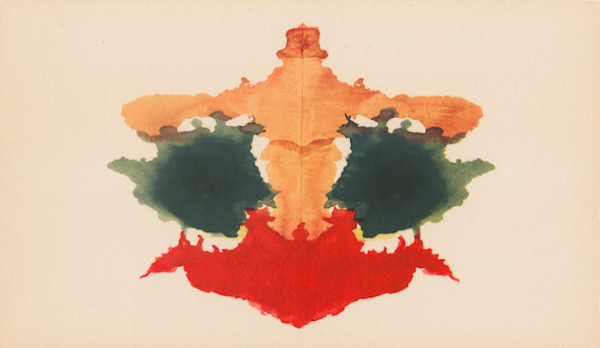
I was excited after Will Smith walked onstage and slapped Chris Rock at the Oscars for telling a joke about Jada’s hair. Not because of what happened, mind you, but because of the possibilities.
There’s levels to this.
We all saw what happened and we all know the main characters, Will and Chris.
We know Jada too, but a lot of people never heard of her until Sunday. Some of us knew about her struggle with alopecia, most people didn’t.
Some us added the word “entanglement” to our vocabulary a couple of years ago. A lot of people don’t have a clue what that is.
And who remembered Chris’s joke about Jada at the 2016 Oscars?
There’s more, much more. This thing goes deep before we start adding our own values, personal experiences, and biases to it.
The slap is a Rorschach test.
No matter how much you know about what happened leading up to it, how you feel about it says more about you than the slap itself.
The slap means whatever you think it means. The possibilities are endless.
To that end, Intelligencer has a roundup of all the takes, neatly categorized:
Perhaps by now you’ve run through your initial viewpoints but still can’t find the motivation to talk to other people about anything else. Or maybe you just want to marvel at the wide range of human reactions to one famous person smacking another famous person. Either way, you’ve come to the right place: We at Intelligencer are compiling the definitive guide to Slap takes.
There are dozens. The first ten:
Violence is never okay. Will Smith was just defending his wife. Chris Rock reacted admirably. Will Smith’s behavior is toxic masculinity. Chris Rock’s behavior is toxic masculinity too. Will Smith should be arrested. Calling for Will Smith’s arrest shows America is a carceral state. Consequences are for noncelebrities. Alopecia is a real disability and should never be ridiculed. The Slap will prompt a lot of awkward and unnecessary small talk.
Bro literally, why did my white coworkers make a b-line to my classroom this morning to ask me about it…? https://t.co/cZ8DvrcIED?utm_source=WellsravenNewsletter
— aj (@aj_CR2) March 28, 2022
Democrats’ Defense of Ketanji Brown Jackson Leaves Some Wanting More
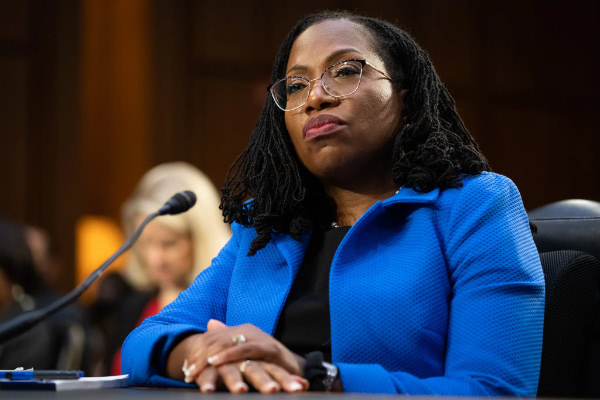
Blake Hounshell and Leah Askarinam, writing for The New York Times:
As Judge Ketanji Brown Jackson solidifies support for her bid to become the first Black woman to join the Supreme Court, Democrats are still debating an enormously complex and weighty topic: how to talk about race in America.
It’s a subject many Democrats would rather avoid, according to strategists and activists who expressed a range of views — and emotions — over days of conversations about Jackson’s rough treatment during the confirmation hearings last week.
“When issues of race come up, Democrats get scared,” said Rashad Robinson, the president of the nonprofit group Color of Change. He lamented that President Biden and Senate Democrats had not more forcefully condemned Republicans for what he said were racist attacks on Jackson’s record and identity.
The eternal question for Dems: Embrace diversity or appease racist whites?
Retreating from cultural fights as opposed to charging into them represents an antiquated viewpoint, a younger generation of activists argue. Inspiring voters of color and encouraging them to vote at higher rates, they say, is more important to the future of the Democratic Party than trying to hang on to a vanishing white majority.
“I think they’re bad at math, frankly,” said Steve Phillips, a prominent progressive Democratic donor, referring to party insiders. “They discount voters of color and put a higher premium on supposedly persuadable swing white voters.”
He added, “They’re constrained by their fear of criticism by people who aren’t going to vote for them anyway.”
To be fair, the press must also make more of an effort to hold Republicans accountable for their behavior. Let’s not continue to take the right’s racism for granted. Ask the obvious questions, make them explain their positions, get them on record.
Women Are Calling Out ‘Medical Gaslighting’

Melinda Wenner Moyer, reporting for the Times:
Patients who have felt that their symptoms were inappropriately dismissed as minor or primarily psychological by doctors are using the term “medical gaslighting” to describe their experiences and sharing their stories on sites like Instagram. […]
Studies have shown that compared with men, women face longer waits to be diagnosed with cancer and heart disease, are treated less aggressively for traumatic brain injury, and are less likely to be offered pain medications. People of color often receive poorer quality care, too; and doctors are more likely to describe Black patients as uncooperative or non-compliant, which research suggests can affect treatment quality.
Storyboard P: Where Is the Place for a Genius of Street Dance?
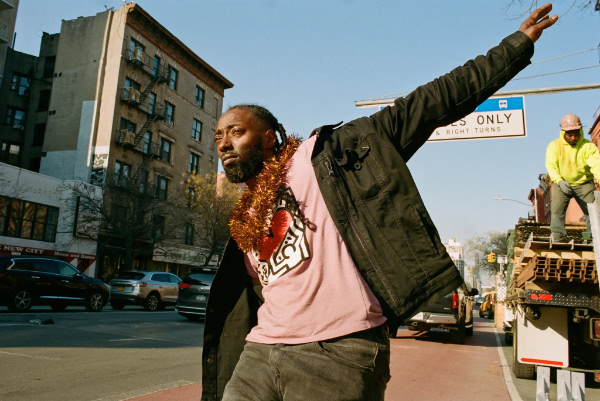
Brian Seibert profiles Storyboard P for the Times:
For a long time, people trying to describe the dancer Storyboard P have reached for grand comparisons and superlatives. He’s the Basquiat of street dancing or a more virtuosic extension of Michael Jackson. He’s the best street dancer in the world or simply the best dancer. To back up these judgments, there is plentiful evidence online: cameos in videos for Jay-Z and high-art films by Arthur Jafa and Kahlil Joseph, appearances in commercials and loads of homemade footage in which he is the star, mind-blowing and one-of-a-kind.
Storyboard is exceptional, extraordinary. This is beyond doubt. The question that all of the praise and video proof raises but can’t answer is: Where does he fit?
Story’s good with words too:
Storyboard’s manager, Shawn Griffith — whom Storyboard calls “Transac-shawn” — told me about some coming “big moves”: a TV show that can’t yet be announced, the creation of a “dance label” equivalent to Def Jam Recordings. Storyboard himself was more equivocal: “If you don’t handle your own business, a project is just a projection,” he said.
In the Face of Black Pain, Elizabeth Alexander Turns to Art
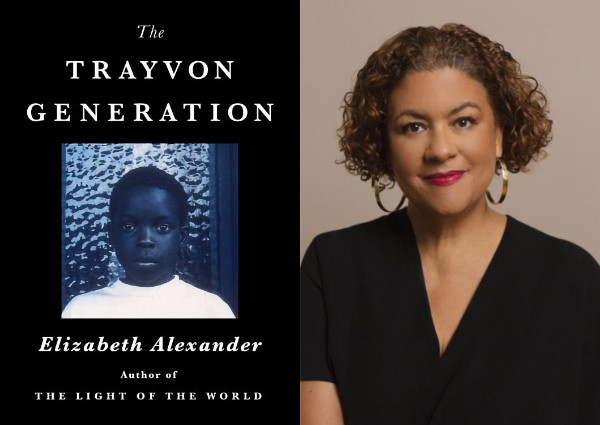
Mitchell S. Jackson reviews poet Elizabeth Alexander’s new book The Trayvon Generation for the Times:
“The Trayvon Generation” — a profound and lyrical meditation on race, class, justice and their intersections with art — Alexander echoes Mannheim’s logic: “I call the young people who grew up in the past 25 years the Trayvon Generation,” the ones who grew up hearing the words, “Two seconds, I can’t breathe, traffic stop, dashboard cam, 16 times.” She writes: “These stories formed their worldview. … The stories were primers in fear and futility. The stories were the ground soil of their rage. The stories instructed them that anti-Black hatred and violence were never far.”
And just what are Black folk to do in the face of that perennial hate? One answer is to turn toward what Alexander has described as her “religion,” i.e., art. “The Trayvon Generation” engages with prose, music and dance, though her focus is predominantly visual. Most of the 20 or so extraordinary visual artists in the book are people of color. Their works set the tenors for various chapters or foster enlightening close reads, and always inspire further discourse on an aspect of “race work.”
Invoking Black Masking Traditions, Artist Demond Melancon Beads Elaborate, Celebratory Portraits

Grace Ebert for Colossal:
Through intricately woven displays of minuscule glass beads and rhinestones, Big Chief Demond Melancon continues a legacy. […]
For nearly three decades, Melancon has also developed a unique visual language that is both entrenched in the 250-year tradition and working to expand the scope of the practice. “The elders, the Indians, and the Black maskers that masked before me, they never saw this as a contemporary art form in the way that I do,” he tells Colossal. “To me, the elders are watching me, and I think what they taught me is different from what I’ve evolved it into.”
More of Melancon’s work here and here.
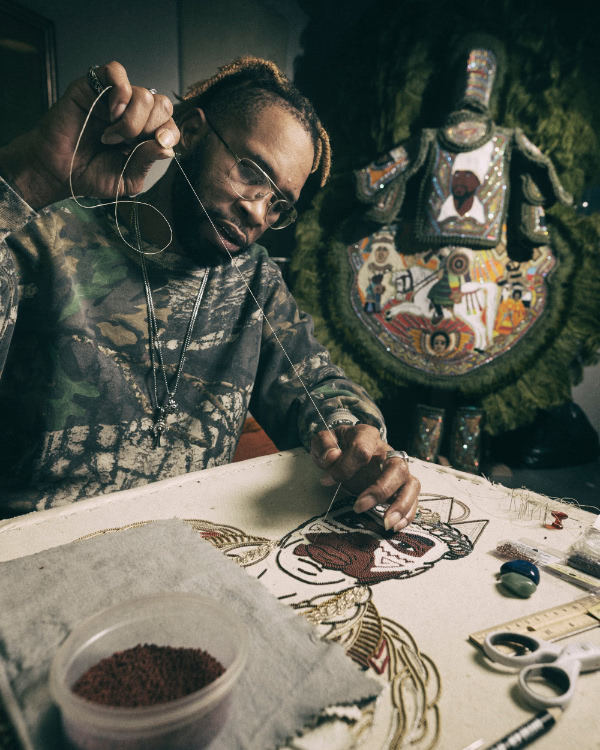
Thanks for reading. See you next week.
